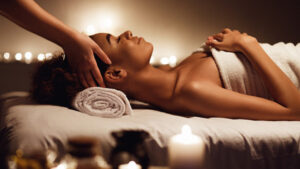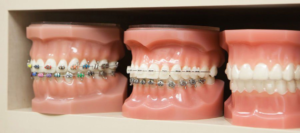Window Replacement Rockville MD can be a big project, so it pays to find a contractor you trust. CR recommends asking installers about their training and certification.

Look for contractors certified to deal with lead paint, especially if your home was built before 1978. And consider using a company with a strong reputation for customer service.
The frame of a window is one of the most important components because it provides stability to support the hardware for the glass panes. A strong, well-constructed frame will help your windows operate smoothly and look great for years to come. Window frames are available in a number of materials to suit different styles and climates, including wood, vinyl, aluminum, and composite. When choosing a frame material, it is important to consider your budget, style preference, and energy efficiency needs.
Wood frames are a popular choice for their beauty and classic, traditional appearance. They can enhance the aesthetic of many architectural styles and are an excellent choice if good looks are your main concern. However, they can also be prone to moisture damage and require regular maintenance to prevent rot and fungus. Wooden window frames can also be painted or stained to protect them from the elements and enhance their visual appeal.
For a more contemporary and energy efficient option, vinyl and aluminum frames are an excellent choice. They are strong, durable, and can be finished in a variety of colors to blend in or stand out depending on your home’s design. These frames are also available in slim profiles to maximize the amount of glass shown.
If you prefer a natural, organic look, composite frames are an excellent choice. They combine the benefits of both wood and plastic to create a strong, low-maintenance window frame that is resistant to moisture and fungus. Composite frames do not require painting or staining and can be cleaned with a mild detergent solution.
Before you begin building your new window frame, it is important to have the necessary tools and equipment on hand. These include a circular saw, reciprocating saw, and nail gun for cutting lumber, sheathing, and fastening components; a level and a tape measure to ensure that the frame is square and plumb; a screwdriver or hammer for driving nails; and safety glasses, hearing protection, and work gloves. After constructing the frame, it is necessary to install sheathing and insulation to meet your specific climate and energy efficiency needs. In addition, if your frame will be located near a sill (or cill) of another structure, you may need to install jamb liners to improve air tightness and prevent water leaks.
Glass
Whether you’re looking to repair a cracked window pane or overhaul your entire home’s windows, there are a number of key things to keep in mind. Choosing the right glass, frame, and hardware helps to maintain functionality, improve energy efficiency, and boost curb appeal. While some DIYers may be tempted to tackle this project themselves, expert installation services offer everything from assessing your requirements to fitting the new windows, saving you time and effort.
Getting to the bottom of what’s causing your issues with windows is a critical first step. Symptoms of damage can range from visible cracks and breakages to subtler ones like difficulty operating windows, which point toward a broken seal. Gaps, cracks, and leaks also impact window efficiency, allowing heat to escape in winter and cool air to escape in summer resulting in higher energy costs.
When opting for glass replacement, it’s important to choose high-quality options. Regular soda lime glass is low in cost but offers poor safety and durability as it breaks into shards with razor sharp edges. Tempered glass, on the other hand, is a safer choice for windows. It’s used in security doors, laminated auto windshields and is the standard for residential windows.
Other features to look for in glass include Low-E coatings and the guaranteed fill rate. The latter is a measure of how much of the space between the windows is filled with insulating gas, and is an essential factor for homeowners seeking to maximise energy efficiency.
The professionals at GoGlass can help you assess and select the appropriate glass for your windows or doors, as well as ensuring proper fit and installation. Once the job is done, they will perform a final inspection and clean up any debris. If your existing windows are still under warranty, they can file a claim on your behalf. This can save you money and extend the lifespan of your windows by delaying the need for complete window replacement. A full window replacement is a more significant investment but can reap greater energy savings and boost your property’s value over the long term.
Hardware
A window’s hardware is the set of parts that make up the windows or doors, including hinges, handles, operators, latches, locks and more. They are a crucial component of your window’s performance, aesthetics and security features. It is important to choose high-quality hardware that enhances performance and provides a lasting impression.
The best window hardware is designed for effortless operation and built to last. It should also be easy to clean and maintain. Durability and weather resistance are especially important, as windows are often exposed to harsh environmental factors like moisture and UV exposure. Choose hardware that is designed to resist rusting and corrosion, so it will continue to function well even with regular use.
Choosing the right style and finish of window hardware will also help ensure that it matches your home’s overall architectural style and design. For example, if your home is modern, you may want to consider choosing sleek and contemporary hardware finishes such as chrome or brushed nickel. If you have a more traditional or historic home, you may want to select more elegant and sophisticated hardware finishes such as bronze or brass.
Window hardware is also crucial for maintaining the integrity of your window’s seal and ensuring that it operates smoothly. It is essential to regularly inspect the hardware for signs of wear and tear, such as loose screws or pins and deteriorated finishes. If you notice any of these issues, it is important to replace them promptly to prevent the issue from becoming more severe and costly.
Window sash springs and balance systems can also suffer from wear and tear over time, requiring replacement. It is important to do routine maintenance on these components, such as applying lubricant, to prevent damage and keep them operating properly. You can also save on a handyman call by doing this yourself, as most replacement parts are relatively simple and straightforward to install.
Warranty
When you make the decision to invest in replacement windows, one of the most important considerations is a solid warranty to protect your investment. But warranties vary by manufacturer, window line and type of installation, and homeowners must understand the warranty specifics. There are several main areas of concern: length, transferability and exclusions.
When choosing a warranty for your new windows, you must first consider the length of the coverage. This will help you determine whether or not the product meets your expectations. Many higher quality manufacturers offer full lifetime warranties that cover all components of the window, including moving parts, screens, sashes and even labor costs. Lesser quality products may have limited lifetime warranties that only cover certain types of defects.
You must also review the terms and conditions of the warranty to be sure you are familiar with the duration, exclusions and transferability. If you are not comfortable with the terms of a particular warranty, it may be best to choose a different product or company for your replacement windows.
If you have a problem with your new windows, it is critical to file a claim within the specified time frame. Once you have submitted your claim, the manufacturer will typically send a representative to inspect the windows in person and determine if they are covered by the warranty. If the windows are covered, the representative will guide you on any next steps, which may include a repair or replacement.
In addition to reviewing the warranty specifics, you should also consider the installing contractor’s warranty. This is often separate from the manufacturer’s warranty and may only cover labor costs for a year or less. It is important to find an installer that stands behind their work and offers a good warranty in order to ensure you get the most value from your replacement windows.
When evaluating the warranty for your replacement windows, it is also important to consider your budget and needs. If you are on a tight budget, you may want to consider a prorated warranty, which provides a decreasing level of coverage over the life of the windows.

